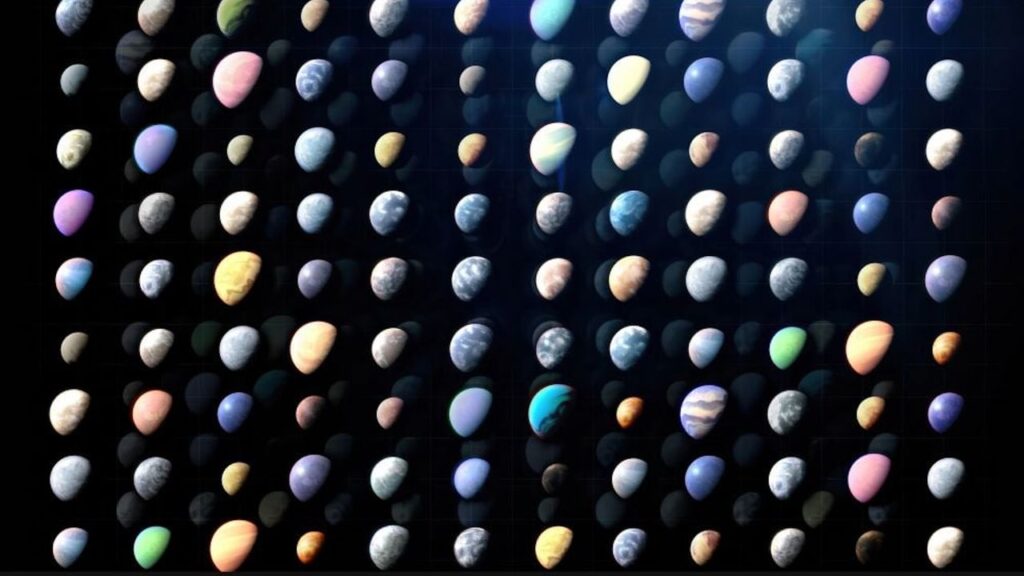
NASA has officially confirmed the existence of 6,000 exoplanets beyond our solar system, marking a significant milestone in the field of astronomy. This achievement underscores the rapid advancements in technology and methodology that have enabled astronomers to detect these distant worlds.
The journey into exoplanet discovery began in 1992, when astronomers first identified planets orbiting a pulsar. The breakthrough continued in 1995 with the discovery of the first exoplanet orbiting a main sequence star. With the launch of missions like NASA’s Kepler and TESS, the number of confirmed exoplanets has steadily increased. By 2015, Kepler had identified its 1,000th exoplanet, and by March 2022, the count reached 5,000. The recent announcement of 6,000 showcases the exponential growth in this field.
While the number sounds impressive, it represents only a fraction of the estimated 100 billion planets that may exist within the Milky Way galaxy. Nonetheless, for humanity, this milestone is a cause for celebration and reflection on our place in the universe.
Detecting exoplanets poses considerable challenges. Vast distances separate us from these distant stars, and many exoplanets are obscured by the brightness of their host stars. Astronomers use various techniques to uncover these hidden worlds. The transit method, which measures the light blocked by a planet as it passes in front of its star, has led to nearly 4,500 confirmations. Another method, radial velocity, measures the gravitational tugs that exoplanets exert on their stars, contributing around 1,140 detections.
Understanding the Universe Through Exoplanets
The significance of exoplanet research extends beyond just counting numbers. Each newly discovered planet offers insights into the conditions necessary for planet formation and the potential for life beyond Earth. As Dawn Gelino, head of NASA’s Exoplanet Exploration Program at the Jet Propulsion Laboratory, stated, “Each of the different types of planets we discover gives us information about the conditions under which planets can form and, ultimately, how common planets like Earth might be, and where we should be looking for them.”
Among the diverse types of exoplanets identified, some are strikingly different from those in our own solar system. For instance, there are hot Jupiters, massive gas giants that orbit their stars in mere days, and ultra-short period planets that complete orbits in just hours. Some planets are so close to their stars that they are tidally locked, leading to extreme temperature variations on their surfaces.
The ongoing search for exoplanets also faces challenges from the indirect nature of most detection methods. Astrometry and gravitational lensing are among the techniques that help confirm these distant worlds. While current methods have been successful, direct imaging remains the gold standard for studying exoplanet atmospheres, yet it has been achieved for fewer than 100 planets.
The Future of Exoplanet Discovery
As of July 2025, TESS has identified 7,655 exoplanet candidates, with over 600 confirmed. The process of confirming a candidate can be labor-intensive, requiring follow-up observations and sometimes the use of different telescopes to ensure accuracy.
Looking ahead, future missions promise to expand our understanding of exoplanets significantly. The Nancy Grace Roman Space Telescope, set to launch in 2027, aims to discover thousands of additional exoplanets through microlensing techniques. Additionally, ESA’s PLATO is expected to detect rocky exoplanets around Sun-like stars following its planned launch in 2026.
As technology continues to advance, the search for exoplanets is becoming more targeted. Instead of a broad approach, astronomers are focusing on specific types of exoplanets, particularly those in habitable zones. The proposed Habitable Worlds Observatory aims to contribute to this effort by searching for signs of life on these distant worlds.
The quest for habitability remains the ultimate goal in exoplanet science. Identifying biosignatures—chemical indicators of life—will be crucial. The James Webb Space Telescope (JWST) is currently addressing this challenge with its infrared atmospheric spectrometry, producing promising but inconclusive results thus far.
With ongoing research and technological enhancements, the future of exoplanet exploration appears bright. As humanity continues to reach for the stars, the discovery of Earth-like planets around Sun-like stars could one day lead to answers regarding the presence of life beyond our own planet.






